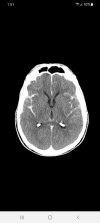I am probably not the best person to ask on recommendations for studying because I'm a PA and so much of the purely medical aspects including labs, imaging, pathophysiology, etc. were pretty easy for me. I just had to brush up on some of the normal parameters for hemodynamic monitoring (which is not used much outside of the ICU) like normal CVP, wedge pressures, etc. I also took the practice exams from FlightBridge ED and did questions from the FP-C exam test bank on the EMS Pocket Prep app on my iPhone. I found the test was much better written with clearer questions than either of those practice exam resources.
My gut impression is that it was easier than I thought it would be but who knows... I could be deluding myself but I'll find out come October.


